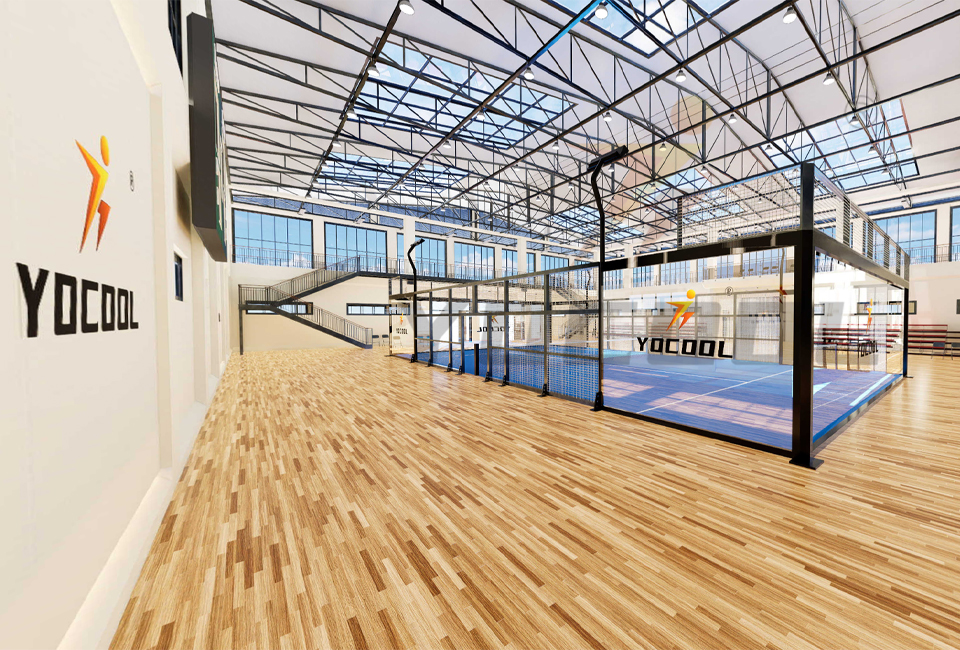

The Structure of Padel Courts in China
Padel, a racquet sport that blends elements of tennis and squash, has seen a remarkable rise in popularity around the globe, and China is no exception. The sport’s rapid growth has led to increased investment in padel facilities, particularly with regards to court design and structure. This article will explore the key features of padel court structures in China, reflecting both the global standards and local adaptations.
Basic Structure of Padel Courts
A traditional padel court is designed to be smaller than a tennis court, measuring 20 meters in length and 10 meters in width. It is enclosed by walls or fencing! This unique setup is essential for the gameplay, which involves hitting the ball against walls similarly to squash. The walls are typically made of glass and solid materials, allowing players to use them strategically during rallies.
In China, many new padel courts are being constructed in urban areas, community centers, and sports complexes. The choice of location often aims at maximizing accessibility for players of all skill levels. The courts are generally positioned outdoors to embrace the natural environment, although there is a growing trend toward building indoor courts that allow year-round play.
Surface Material
The surface of padel courts plays a crucial role in how the game is played. In China, many courts utilize synthetic turf, which offers a good combination of durability and playability. This material is popular due to its ability to withstand varying weather conditions and provide excellent traction for players. Some facilities may also incorporate clay or rubberized surfaces, catering to different player preferences and ensuring that the courts are versatile for various events.
Lighting and Infrastructure
As padel grows in popularity, the need for well-illuminated courts becomes increasingly evident. Many new installations in China are equipped with high-quality LED lighting systems, allowing for evening play and enhancing the experience for both players and spectators. Adequate lighting is essential not only for gameplay but also for hosting tournaments, where visibility is critical for both competitors and fans.

In addition to lighting, the infrastructure surrounding the court is vital. Good ventilation, seating for spectators, and facilities for players, such as changing rooms and showers, are becoming standard in newly constructed padel centers. This emphasis on player and fan experience reflects a broader trend in sports facility design, aiming to create a welcoming environment for all.
Sustainability in Padel Court Design
With increasing awareness of environmental issues, many padel court constructors in China are adopting sustainable practices. This includes using recycled materials for both the court surface and surrounding infrastructure. Solar panels are also being integrated into new facilities to power lighting and other amenities, which not only reduces operational costs but also aligns with global sustainability goals.
Cultural Adaptations
While the fundamental structure of padel courts follows international standards, local adaptations are also prevalent. In China, there is an emphasis on creating community-oriented spaces. Courts are often designed to accommodate larger gatherings and encourage social interaction among players and spectators. Some facilities include lounges and refreshment areas that blend sports and social culture, helping to create a thriving padel community.
The Future of Padel Courts in China
Looking ahead, the future of padel courts in China appears bright. As more people discover the sport and its benefits, the demand for well-structured and accessible courts will continue to rise. Investment in quality facilities will likely increase, along with efforts to promote competitive play at local and national levels.
In conclusion, the structure of padel courts in China reflects a blend of international standards and local cultural influences. From innovative design to community-focused facilities, these courts are more than just playing areas; they represent a growing sport that offers not only health benefits but also social engagement. As China embraces padel, the development of high-quality courts will be pivotal in fostering a vibrant sporting culture that can compete on the global stage.
High-Performance Industrial Flooring Solutions China Paddle Tennis Court for Sale
High-Performance Industrial Flooring Solutions Durable & Cost-Effective
Homogeneous Transparent Floor – Durable & Stylish Rubber Floor Solutions
Premium Homogeneous Transparent Floor for Durable & Stylish Spaces Rubber Floor Solutions
Premium Sports Floor Solutions Durable PVC Sports Floor & Rubber Floor for Gyms
Durable Rubber Composite Floor Premium Rubber Floor & Mats Solutions